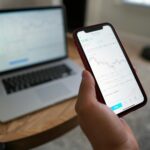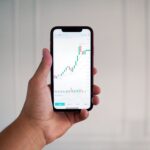Introduction
In recent times, there’s been a noticeable upsurge in the number of university students drawn to the world of trading, enticed by the potential for financial gain and the intellectual challenge it offers. However, trading is a demanding pursuit that requires a significant investment of time and mental resources, which may pose a risk to academic responsibilities if not managed well. Balancing the rigors of university coursework with the fast-paced nature of trading is an arduous task, but not an impossible one. This article provides a comprehensive approach to help students navigate the challenges of juggling both commitments, ensuring neither your education nor your portfolio suffers.
Understanding the Demands of Trading and Studying
Trading is an activity that can consume as much time and energy as you allow it. It requires an acute sense of awareness, a solid grasp of market fundamentals and technical analysis, and an ability to make quick decisions under pressure. Contrarily, academic success demands regular study, completion of assignments, and preparation for examinations. While these two fields may appear vastly different, they both require dedication, analytical thinking, and the strategic application of knowledge. Appreciating the intensity and skill set required for both activities is the first step toward achieving a balance.
Setting Clear Priorities
When trading and studying vie for your attention, setting clear and sensible priorities becomes crucial. To safeguard your academic and financial investments, students must learn to discern between what’s urgent and important. Establishing a hierarchy of tasks ensures that you’re not allocating time to trading when critical academic deadlines are approaching or overspending hours on less significant assignments when the markets present unique opportunities.
Time Management Strategies
Time, the most limited of resources, must be expertly managed. One could take a leaf from the 80/20 rule, which posits that approximately 80% of effects come from 20% of the causes. By applying this principle, students can focus on high-impact study activities and trading strategies that yield significant returns on investment. Integrating time management tools, such as digital calendars and time-tracking apps, allows for careful planning and could prevent the clash of market research with class schedules or study times.
Risk Management in Trading and Academic Pursuits
Risk management is a core component of successful trading, encapsulating the need to understand and mitigate potential losses. This concept bears similarity to academic risk management, where students assess the potential negative outcomes of certain study decisions (e.g., skipping a lecture to monitor trades) and make informed choices that minimize the risk of poor academic results. Adopting robust risk management strategies can help maintain a profitable trading account and a commendable academic record.
Embracing Technology and Tools
Modern traders and students alike have a wealth of technology at their disposal. Trading platforms offer real-time data and automated functions, while academic portals and online libraries provide a plethora of educational resources. Exploiting these tools can greatly enhance efficiency in both domains. Apps designed for market analysis or project management can also streamline activities, allowing for smooth toggling between trading and studying functions.
Stress Management and Self-Care
The amalgamation of trading and academic work can lead to heightened stress levels, which may impair performance in both arenas. Effective stress management techniques, such as regular exercise, mindfulness meditation, and adequate sleep, are instrumental in maintaining cognitive function and emotional equilibrium. Self-care is not a luxury but a crucial part of a trader-student’s routine to keep burnout at bay and promote long-term productivity.
The Significance of Networking and Mentorship
Engaging with a network of peers and mentors in both trading and academic sectors provides a support system that is invaluable for growth and learning. Experienced traders can offer insights into market behavior, while academic mentors may guide research and study techniques. These relationships can be pivotal in overcoming obstacles and fueling motivation.
Continuous Learning and Adaptation
The landscapes of both the financial markets and academia are ever-changing. Staying abreast of the latest trends, tools, and theories is essential for ongoing success. This may involve regularly reviewing trading strategies in response to market shifts or staying updated with the latest research in one’s field of study. Adaptability is the hallmark of a proficient trader-student, enabling them to pivot as necessary in response to new information.
Conclusion
Mastering the art of balancing trading with university studies is a dynamic and rewarding challenge. By prioritizing effectively, employing savvy time and risk management strategies, leveraging technology, and engaging in continuous learning, students can protect and propel their dual interests. The journey is one of discipline and determination, but with the right approach, it can lead to exceptional personal and professional development.



